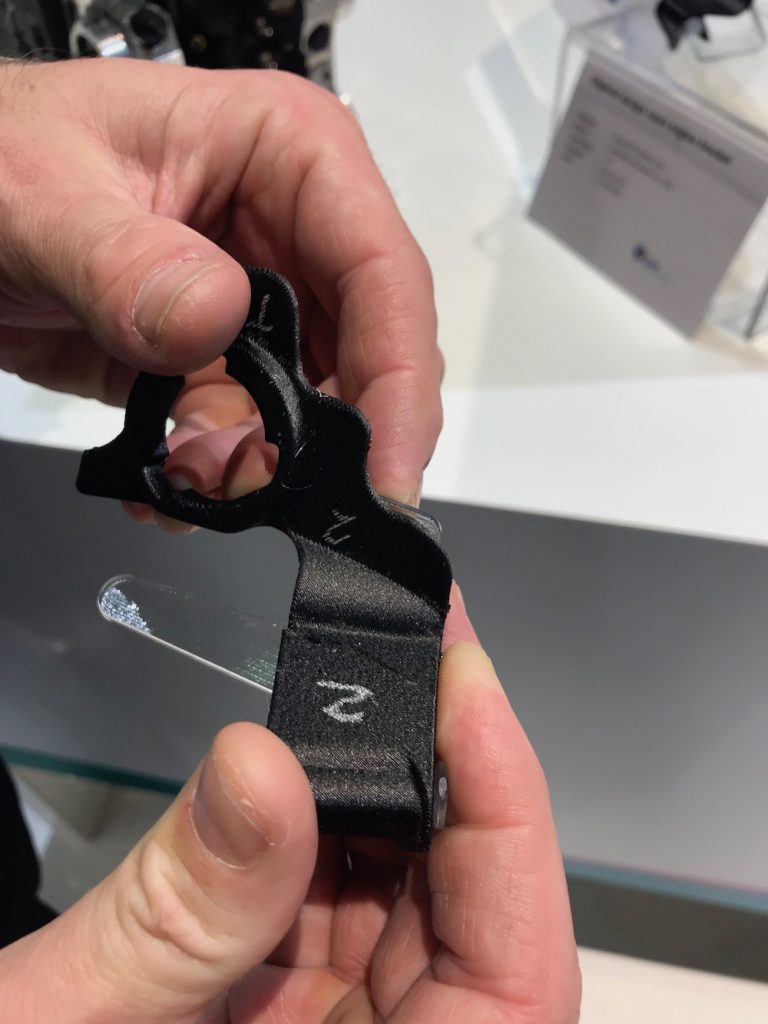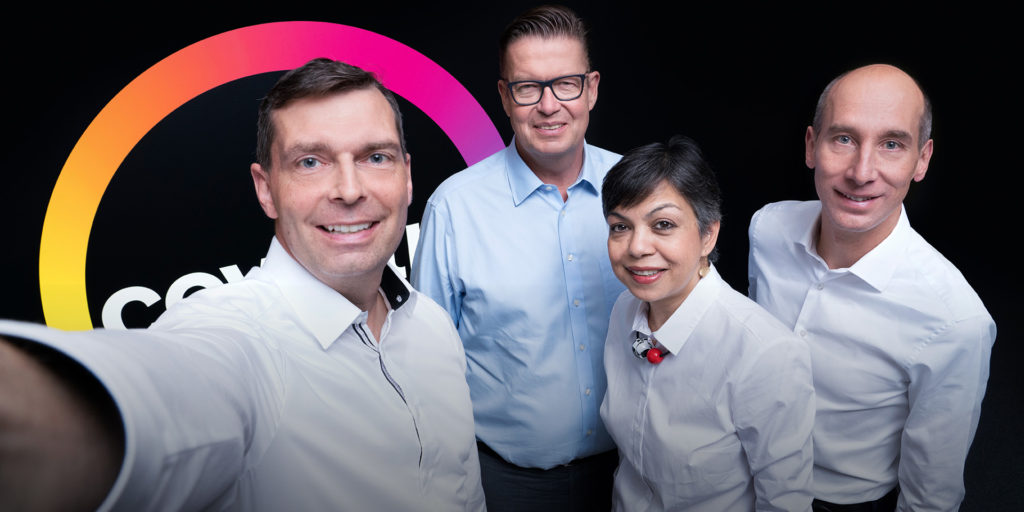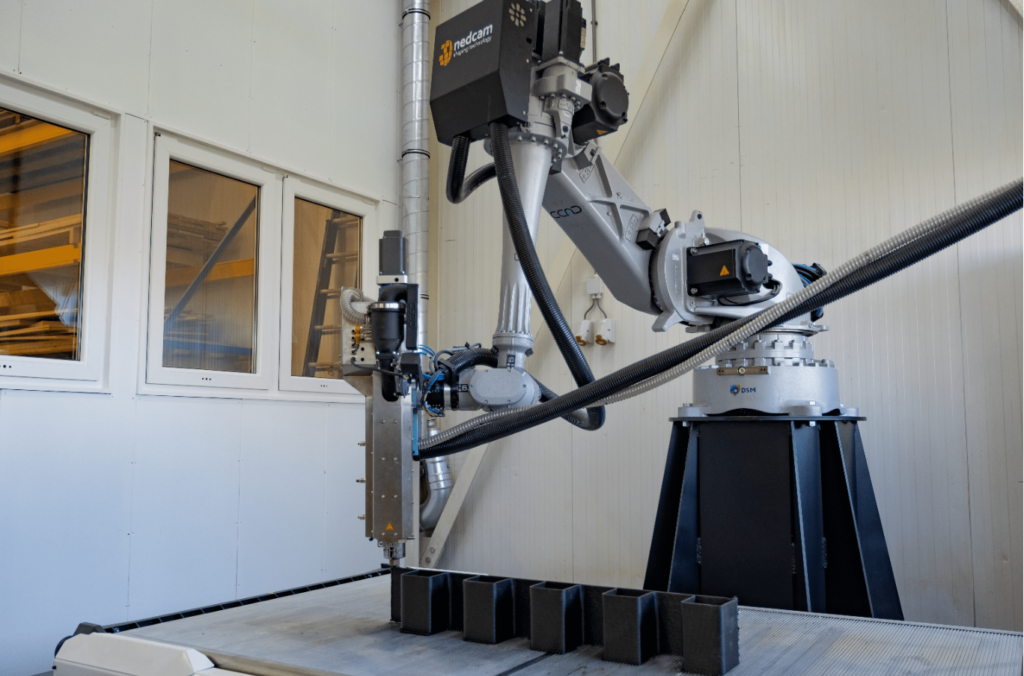German materials company Covestro has acquired DSM Functional Materials for €1.6 billion, of which DSM aims ultimately to receive €1.4 billion net. The purchase includes the following:
“DSM’s Resins & Functional Materials businesses, including DSM Niaga, DSM Additive Manufacturing and the coatings activities of DSM Advanced Solar. These businesses represented €1,012 million of DSM’s 2019 total annual net sales and €133 million of DSM’s 2019 total EBITDA.”
Geraldine Matchett and Dimitri de Vreeze, Co-CEOs of DSM, said, presumably in choir:
“This sale builds on our approach of actively managing our businesses, as DSM continues to evolve as a purpose-led, science-based company operating in the fields of Nutrition, Health and Sustainable Living. The deal delivers strong value to DSM and is strategically attractive for all parties. In Covestro, we recognize a company that shares similar views on culture and the value of sustainability. We know that Covestro will be a good owner of these businesses for customers, colleagues and other stakeholders.”

An image of an Arnite bridge made by DSM, DHV and CEAD
DSM Additive Manufacturing only recently acquired Clariant’s 3D printing business. This marks a rather surprising turn of events for the 3D printing industry. DSM was one of the most active players in the industry. The company built on its existing Somos business in resins to create filament, sintering powders, and a host of new materials for AM.
All in all, I was very impressed by DSM’s efforts in the space. With a deep application focus, the firm kept creating market-ready propositions that showcased deeper industry knowledge and engagement than others. DSM’s polymer bridges, for example, are a very innovative, potentially very high-volume application. The company also worked on pellet printing and introduced new materials. DSM additionally selected and helped startups to develop tools for the 3D printing industry, worked with Twikit on mass customization, introduced custom mouth guards to market, all while it invested in numerous 3D printing businesses, including Addaptive3D.
In a previous article outlining the state of the polymer materials market in 2019, I did point out that, “DSM has invested significant amounts of money in its own organizational capacity and in investments. The organization is the biggest at DSM and the company seems to want to be all things to all men. One-stop-shop could work especially if their industry-specific expert approach remains uncopied. It does tie them to high expectations at board level and an elevated cost structure when compared to other firms.”

A DSM Automotive part validated in DIGIMAT
What set DSM apart was its deep sector- and vertical-based knowledge. DSM really chased applications and made market-ready propositions available. By working with stakeholders throughout the value chain the firm had a unique 360-degree view of problems affecting OEMs, service bureaus, and manufacturing firms. I was always impressed by the deep and very application-specific knowledge that DSM staffers themselves have. The firm had the empathy and polymer knowledge that lead it to place itself in the driving seat of developing new solutions for 3D printing problems.
DSM’s work was always aimed at growing the market through new far-reaching applications and it was a joy to watch their progress unfold. Their work, for example, in under-the-hood applications for higher temperature materials and in medical applications was measured, steady, and innovative. They didn’t toot a big horn or talk up nonexistent achievements, but chipped away at the problem. Uniquely the firm really adopted and drove the ecosystem approach and, through this, pushed and lead in the development of new businesses and applications. DSM’s 3D printing leader Hugo da Silva always impressed me and I really hope that Covestro continues to let him run the unit.

SLS 3D printed conveyer belt sprocket using DSM’s new Arnilene AM6002 (P)
Does this sale now mean that this approach is not a valid one? We’re on a long-term trajectory to higher volume but lower margins on materials across the board. To me, application-specific propositions have the power to ensure long term margins and higher prices. If only to delay the onset of lower prices, the approach in my opinion is valid. It is also difficult to get large companies started in 3D printing at volume. Through hand-holding and application development you can accelerate their adoption of 3D printing and unlock new markets. In the long run, better market knowledge and strategic relationships with customers will let you develop exactly what the market needs when it needs it and improve your position.
Why did DSM sell?
- Perhaps the firm had set very ambitious volume targets that were just unmet by the team. Many had stars in their eyes when making financial projections years ago. Management, therefore, at one point just stopped being sentimental and decided to dump the unit.
- A focus on nutrition has lead it to expand in that direction, recently acquiring Eber, an animal food company, for example. Before this, it has bought Glycom, which makes baby milk ingredients. Over the years, the firm has leaned more and more toward food ingredients, especially for items such as supplements, “medi food” and products like plant-based foods. If we look back, for over a decade, DSM has sold plastics and similar businesses to buy food related companies. The firm clearly sees a future in things Danone needs or useful goods for Unilever, rather than polymers. Pound for pound in money and material supplements, food additives, and complete food propositions can be a very tempting business. For Co-CEOs, together in the helicopter view, it could seem super appealing to ditch the “icky everyone hates the plastics” business.
- If the company is very focused on sustainability, it will be much harder to achieve with the resins business specifically since this is a problematic divisions from a sustainability standpoint. This is much more relevant because “Since 2010, the Short– and Long-Term Incentive elements of the remuneration of DSM’s Managing Board and executive bonuses relate to the company’s financial and environmental performance in equal measure.” The quickest and easiest path to your bonus in a difficult year may just be to give up leadership in additive.
- As the nice McExcel people will always tell you, focus is important. The days of a huge conglomerate being good at everything are gone and companies are being consulted to death toward very industry-focused approaches. Losing these units will focus DSM’s attention where it needs to be.
- One development that splices in nicely with the above is the fact that, if we look at P/E multiples and valuations, many polymer companies trade at much lower valuations and multiples than nutrition firms, for example. There is a lot of excitement in M&A in food as well. So, this unit could be seen to drag down the performance of the company and indeed its valuation.
- Indeed, one obvious strategy, would be to become a leader in animal nutrition and perhaps sell this off to Mars or a Chinese firm, spin out the rest of the materials businesses and then become a human nutrition business.
- It could also be a knee jerk response with recent materials sales and EBITA sharply lower due to COVID.
Why did Covestro buy?

The Covestro board says hi.
- Covestro managed to buy a €1.1 billion revenue, €133 million profit business for €1.6 billion. What’s more, in functional coatings for solar and additive manufacturing, they now have good positions in high growth industries. This is an incredibly good deal for them. Frankly, if they can keep investing and go the distance, this could be an incredibly lucrative deal for the firm. Given the times and the uncertainty, this is a very audacious move by Covestro. But, it is one that should pay off handsomely.
- Apart from a shy move into the business some years ago, some work with Carbon and some work on polycarbonate, the firm had very little sway and exposure to 3D printing until the acquisition. Now, it is with one fell stroke an industry leader.
- Covestro is sticking to its guns in polymers. It is completely focused on polymers as a company and is experiencing declining profits and revenue in some lines as its polyurethane materials, in particular, suffer from direct competition and competing materials. The 3D printing businesses and more coatings exposure will give it a new narrative to tell investors.
Was this a good deal for Covestro? DSM?
Covestro is not doing amazing. In 2019, the company had a 15% decline in sales, a 49% decline in EBITDA, a 41% decline in operating cash flow, and a 71% decline in free operating cash flow. Both its core polycarbonate and polyurethane businesses seem under increased competition. The company worked hard to offload debts, but they have crept up again. The firm’s current market cap is $7.7 billion while its revenues are $16 billion. On an April earnings call, the company said that they “faced a core volume decline of 4.1%” in Q1 and promised reduced CAPEX and increased savings.
Still, analysts are clinging to a hold. For the management team, therefore, renewed exposure to 3D printing and a bold move in COVID times could very well give the firm a new lease on life. Overall, this could be a key deal for Covestro and be meaningful for the firm. If they sell the “materials leadership in 3D printing” story well, it could have a huge effect on stocks and inertia around the company, as well.

DSM and Nedcam will collaborate to add capacity and develop new applications for large-size 3D printing. (Image courtesy of Royal DSM/Nedcam)
This deal looks silly from DSM’s viewpoint, however. Even if the company had decided to rid itself of these businesses it could have very well waited for a higher valuation and better deal. If we look at their numbers for first half of the year, the snapshot is clear with “sales +6%, organic sales +5%, Adjusted EBITDA +5%” in nutrition, while in materials the results were “-16%, volumes -14%, Adjusted EBITDA -28%.” Dump part of the weak materials segment, therefore, could be a conclusion.
For shareholders, however, there could be a better time to sell, especially while over this very challenging first half, “Adjusted net profit down 4% to €399m” and “Net profit: €270m” The “Adjusted Net Operating Free Cash Flow of €342m, up 33%.” With another €600m in cash, the firm could have waited out this temporary trouble and sold at a better time. This is only a good deal if the company uses this time to aggressively deploy the billion it will get to gain leadership in its nutrition business. If the firm, for example, buys brands and moves toward the consumer or does a spectacular deal in its chosen field, then it would be a question of them deploying cash where they want to, now that assets could be distressed. If however, the firm sits on this cash then this is not a good play for DSM and will not be in the best interests of shareholders.
What are the implications of this deal?
- BASF versus Covestro: the broader race in materials seems to be a German affair. We all thought that, when the polymer and chemical companies were talking of consolidation, that they would buy us, but they’re buying each other now. Against the broad portfolio Germans, we have the more specific focussed players Evonik, Arkema, and Solvay, and perhaps Sabic?
- DSM’s withdrawal could delay new entrants or could cause them to not invest in 3D printing.
- With fewer players and competition, pressure on prices will be lower and there may be less innovation from materials companies.
- Of late, DSM and other firms have been driving innovation and adoption in 3D printing. Perhaps their departure will slow this down.
- Rather than invest heavily in application development one would expect more of a “here is our resin please buy it” approach.
- Fewer players and materials companies exiting the business could convince the Wall Street set that 3D printing is not what it is cracked up to be.
Subscribe to Our Email Newsletter
Stay up-to-date on all the latest news from the 3D printing industry and receive information and offers from third party vendors.
Print Services
Upload your 3D Models and get them printed quickly and efficiently.
You May Also Like
Consolidation in AM: How 2025 Is Shaping the Industry’s New Normal
The first half of 2025 has been marked by a clear shift in the additive manufacturing (AM) industry. Companies are no longer just focused on developing new tech by themselves....
Etsy Design Rule Change Reduces Selection of 3D Printed Goods
Online marketplace Etsy has implemented a rule change requiring all 3D printed goods on the site to be original designs. The update to the site’s Creativity Standards states, ¨Items produced using...
U.S. Congress Calls Out 3D Printing in Proposal for Commercial Reserve Manufacturing Network
Last week, the U.S. House of Representatives’ Appropriations Committee moved the FY 2026 defense bill forward to the House floor. Included in the legislation is a $131 million proposal for...
Transforming From Tourist to Native: Duro CEO Michael Corr Explains Why the Company Rebuilt its PLM Software on AI
In these early innings of the AI boom, many market analysts have expressed concern that AI spend has gotten too far ahead of the technology’s proven ability to deliver significant...
































